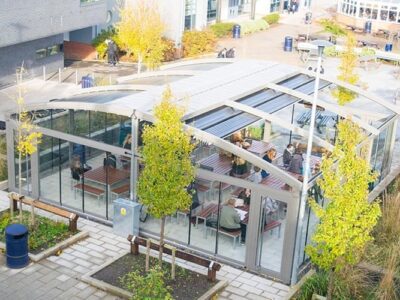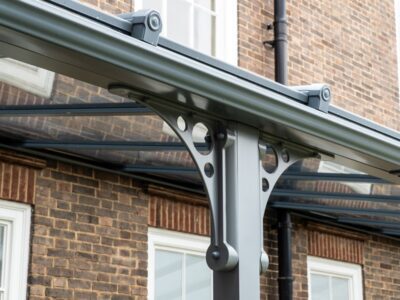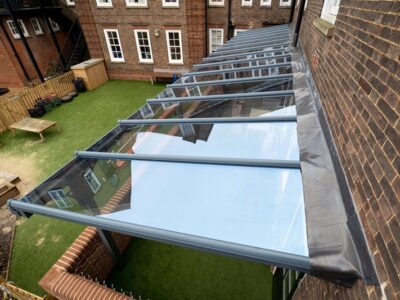The complete guide to outdoor learning and school canopies
Posted on | Posted in Education
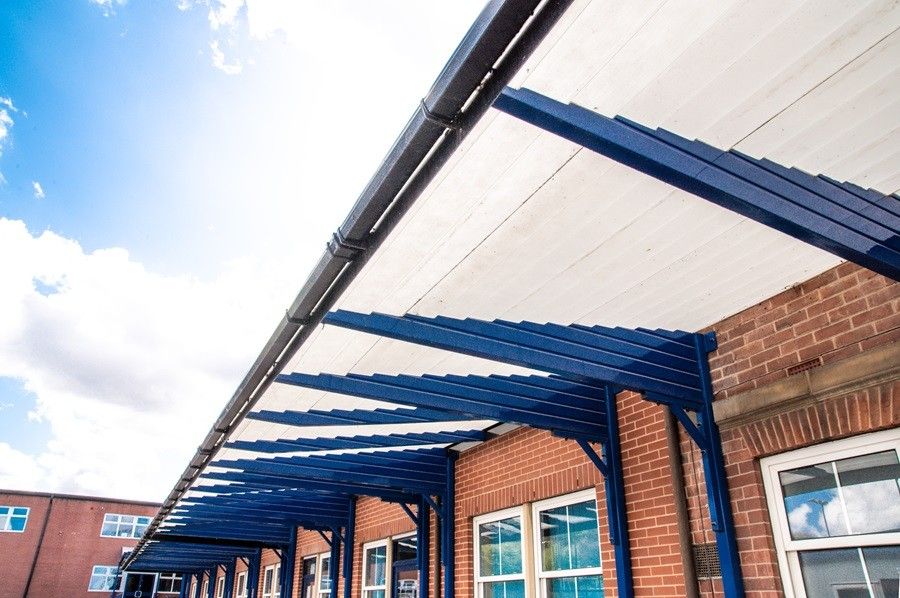 Contents
Contents
- The benefits of outdoor learning and play in schools
- Outdoor learning and the UK curriculum
- Practical planning: space, safeguarding and risk
- Making outdoor learning work in all weather
- Outdoor classroom design and equipment
- Outdoor learning and activities
- Putting outdoor learning into practice
- Funding and procurement
- Outdoor learning and play in action
- FAQs
Most teachers know that getting pupils outside makes a difference. You see it in their faces when they’re learning about plant life cycles in the school garden or working through maths problems on playground benches instead of classroom desks.
We know the reality isn’t always that straightforward. A lesson planned for outside can quickly be abandoned when rain starts or wind blows papers across the playground. When the weather is so unpredictable, it’s often easier to stay indoors than risk a weather-related disaster.
That’s where proper outdoor learning spaces come in. Outdoor classroom canopies let you plan for lessons, breaktimes and social activities year-round. Under cover, children get all the benefits of outdoor play in schools without worrying about the weather.
We’ve been helping schools solve these problems for more than 30 years. This guide shows you what works, backed by evidence from hundreds of installations and the schools that use them every day.
Book a free site survey to see how your school could make outdoor learning work all year round.
The benefits of outdoor learning and play in schools
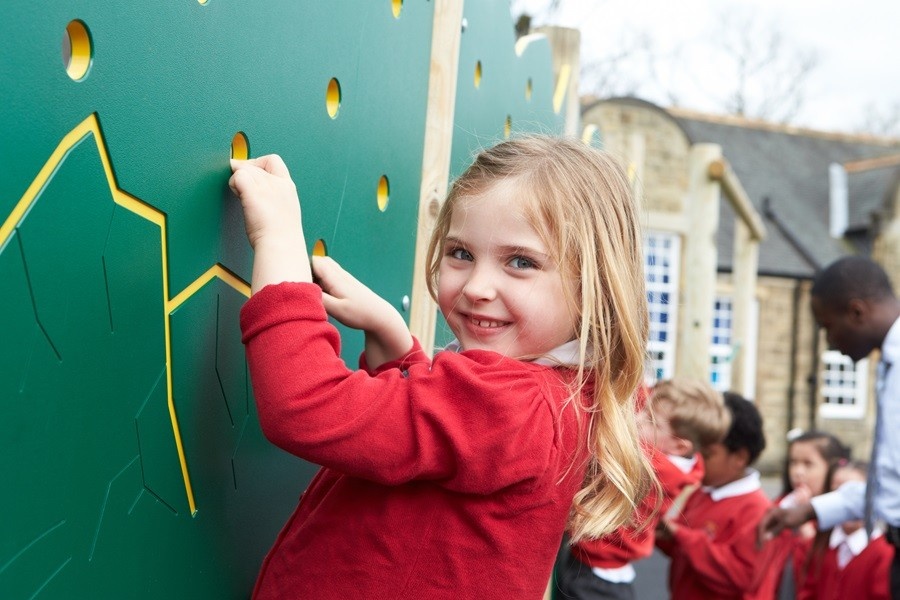
The research is clear, and it matches what schools tell us after installing outdoor learning spaces:
Students make faster progress
The Education Endowment Foundation found that children taking part in regular outdoor learning gain around four months’ extra progress each year. That’s significant when every month of learning counts.
Behaviour improves across the school
Headteachers consistently report fewer incidents and calmer lunchtimes once pupils have proper outdoor play spaces. Students are spread out more evenly and staff can supervise better, so everything runs more smoothly.
Engagement goes up
Natural England’s study found 92% of pupils enjoyed lessons more when they happened outdoors. Teachers notice the difference too – pupils who struggle with concentration in classrooms often focus better in fresh air.
Physical and mental wellbeing improve
Time outdoors means more natural light, more movement and a change of scenery from the classroom. Studies link this to reduced stress and a better mood, helping pupils feel more balanced throughout the school day.
The pattern is consistent: when schools create proper outdoor learning environments, pupils thrive. There’s no big secret – it’s just giving children the space and conditions they need to learn at their best.
Outdoor learning and the UK curriculum
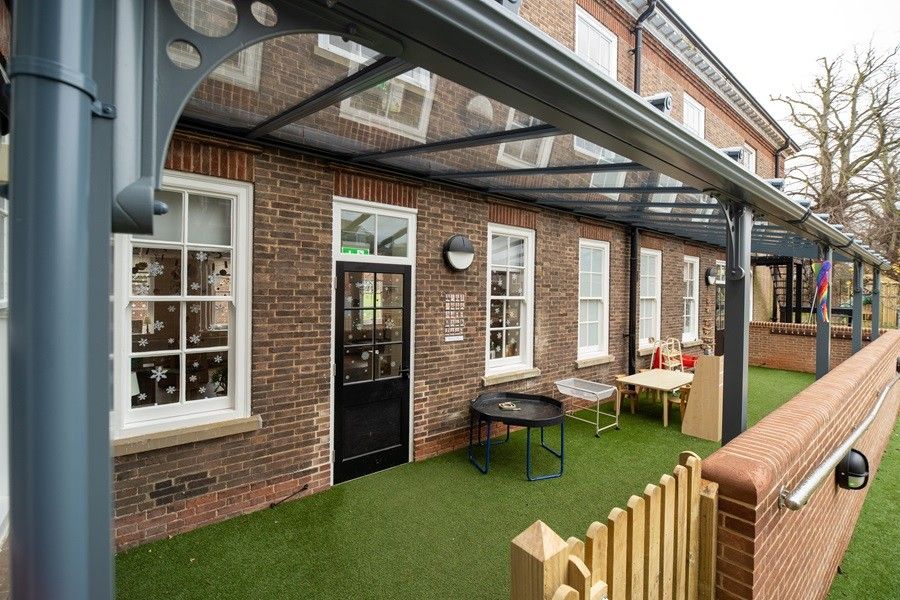
Outdoor learning isn’t an extra subject to squeeze into an already packed timetable. It links directly to curriculum goals and gives pupils a different way to achieve them. From Early Years to Key Stage 2, lessons taken outside help bring abstract concepts to life, and pupils often remember them better too.
The trick is spotting where your normal lessons could work just as well outside. That Year 2 maths lesson on measuring works just as well (or better!) when pupils are measuring the playground equipment or working out how many giant steps it takes to cross the playground. It’s the same learning, but pupils are chatting, moving around and actually seeing why measuring matters in real life.
EYFS outdoor learning: building foundations
EYFS outdoor learning works brilliantly because young children learn through exploration. For early years, the outdoors can become a natural extension of the classroom. Outdoor activities like role play, sand and water play, gardening and nature walks all hit key developmental areas:
- Communication: Describing textures, colours and sounds they discover outside
- Physical development: Running, climbing and playing builds strength and coordination
- Understanding the world: Watching the seasons change, exploring new materials, caring for plants
School gardens: hands-on learning in action
If you want to encourage outdoor learning and play at school, a school garden is one of the best things you can add to your space. It doesn’t need to be overcomplicated – just some space where children can get their hands dirty planting vegetables, making bug hotels or watching things grow.
The brilliant thing about school gardens is how much children learn without even realising it. They pick up responsibility, teamwork and patience, plus it ties into key curriculum subjects. Science lessons make a lot more sense when you’re watching seeds sprout or seeing the full life cycle of a plant, and art lessons are instantly more engaging when you’re sketching plants you’ve watched grow.
If you’re planning to introduce a garden at your school, our complete guide to setting up a school garden walks you through the practicalities – finding the best spot, organising funding and keeping it going long-term. If you want some easy, low-maintenance ideas to try, check out our gardening projects for schools. It’s full of activities that will get your pupils outside and enjoying themselves.
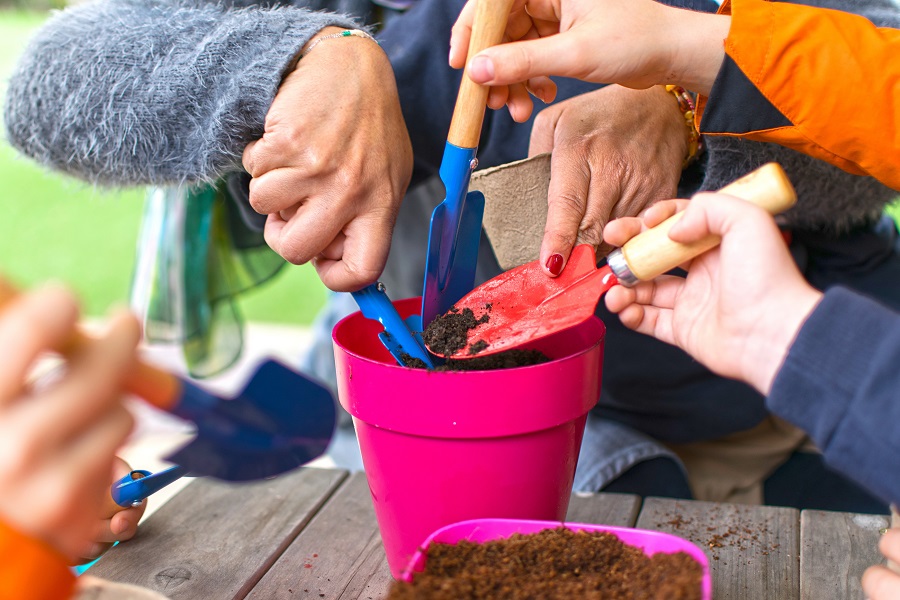
KS1 outdoor learning: hands-on discovery
KS1 outdoor learning supports curiosity and independence. Six and seven-year-olds naturally want to touch, move and investigate, and outdoor lessons are perfect for harnessing that energy. Teachers often find pupils are more engaged when activities feel like fun exploration instead of another classroom task. Here’s how it can work:
- Science: Spotting plants and animals in school grounds, planting seeds and noting the growth
- Maths: Measuring playground areas, counting and sorting objects by size or colour
- English: Storytelling in the fresh air, descriptive writing based on what they can see, hear and feel
- Art: Creating collages with leaves, twigs and other materials found outside
KS2 outdoor learning
By Key Stage 2, pupils are ready for the kind of outdoor learning that really gets them thinking. Outdoor spaces give them space to test out ideas and tackle real-world challenges hands-on.
Science: Setting up long-term experiments, testing materials for waterproofing or tracking how different areas of the grounds support wildlife
Maths: Measuring perimeters and areas of playground spaces, collecting data for graphs and charts
Geography: Weather recording, mapping how water flows around school during heavy rain or creating maps of the school grounds
English: Writing reports on their findings or creating stories inspired by nature
PE and teamwork: Designing outdoor games using natural features or setting up obstacle courses that other classes can try
You might even notice students surprise you outdoors. Children who struggle with motivation in the classroom can suddenly become project leaders when they’re outside investigating real problems. Outdoor learning gives students the confidence to think independently and apply learning in ways that tend to stick.
Want to build confidence planning outdoor lessons? Our guide on how to get started with outdoor learning has simple tips and examples you can use straight away.
Assessing outdoor learning
Outdoor learning activities can be assessed just like indoor lessons. Students tend to be naturally chatty about what they’re discovering, so you often get even better insight into their thinking.
Photos, pupil workbooks and teacher observations all build a picture of genuine learning happening. Many schools like to use outdoor learning projects for school displays or newsletters, showing parents, governors and inspectors how much curriculum ground you’ve covered.
Practical planning: space, safeguarding and risk
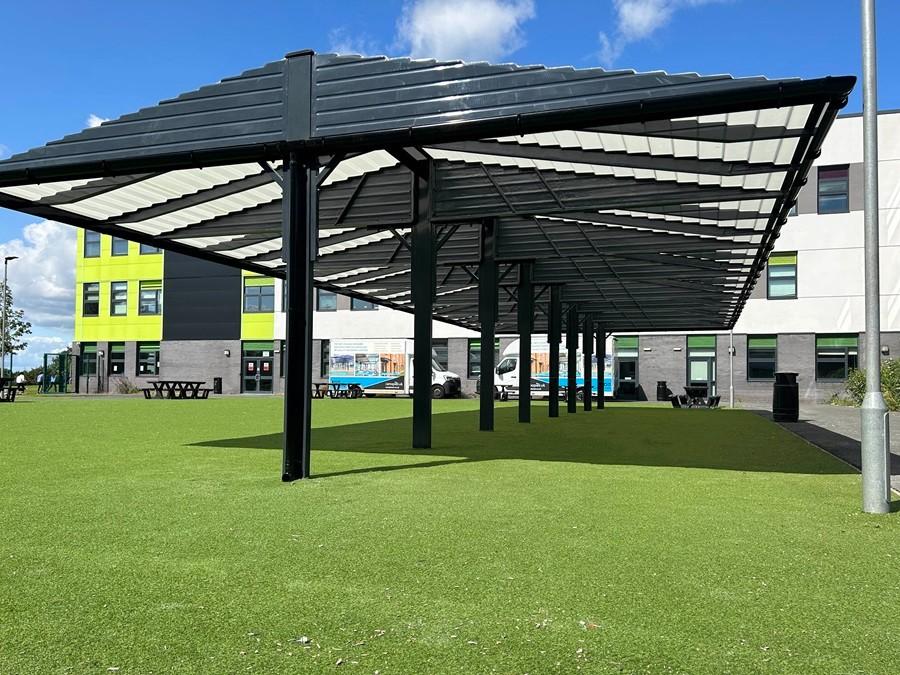
Getting outdoor learning right isn’t just about putting up a canopy and hoping for the best. The schools that use their outdoor spaces best think carefully about how different areas work together, how staff can supervise safely and how every pupil at school can enjoy them.
Creating zones that serve different needs
- Outdoor classroom zones: Clearly defined but flexible areas. A covered area means the whole class can gather for the lesson start, with spillover space where groups can spread out for activities.
- Quiet reflection spaces: Calm corners where pupils can decompress are especially important for children who find busy playgrounds overwhelming. They work well tucked into corners where they’re still visible to staff while offering a sense of calm.
- Active play areas: Robust surfaces and plenty of room for football, games and general running around. Keep these separate from quieter areas so different activities don’t clash.
- Nature zones: Ponds or school gardens give students contact with the natural world and are perfect for supporting science lessons.
Safeguarding and supervision
- Visibility is key: Clear sightlines help staff supervise safely and avoid hidden corners.
- Boundaries: Fences, borders or even different surfaces help pupils understand where they can and can’t go.
- Access control: If spaces connect to public areas, gates and clear visitor routes help keep pupils safe.
For more practical guidance, see our advice on safety for school playgrounds, including signage tips and weather protection.
Outdoor learning risk assessments
A clear outdoor learning risk assessment helps staff feel confident. That means having formal reviews in place while also encouraging regular checks for things like wet surfaces, broken equipment or sudden changes in weather. With simple, weather-specific guidelines, staff know when outdoor spaces are safe to use and pupils don’t miss out unnecessarily.
Practical details that make the difference
- Surfaces: Choose materials that cope with heavy use and drain well. Anti-slip finishes help keep pupils safe in wet conditions.
- Storage: Dedicated storage to keep equipment safe and make outdoor lessons easier to set up.
- Seating: A mix of fixed benches for group work and moveable options for different activities.
Making outdoor learning work in all weather
![]()
School leaders often find the biggest barrier to outdoor learning isn’t finding curriculum links or convincing pupils, it’s the British weather. You can’t plan for year-round outdoor learning if you’re constantly moving lessons back indoors when it starts drizzling.
Outdoor classroom canopies help solve this problem. Proper shelter means you can plan confidently for lessons outside, knowing they’ll actually happen. Here’s what makes the difference:
- Protection that actually works: A well-designed outdoor classroom canopy keeps out rain while letting in plenty of natural light. Designs with proper guttering and drainage keep the space safe and slip-free.
- Blocking wind without blocking light: Position matters. School canopies for playgrounds work best when they’re tucked against buildings or placed to block winds.
- Extending the school day: Winter afternoons get dark early. Schools that add lighting under their canopies can use outdoor spaces right through to home time. Fully enclosed canopies can incorporate full lighting and heating, making the space comfortable even on chilly days.
- Clothing and kit policies: Setting clear expectations makes a difference. Simple things like storage for waterproofs and wellies or a class set of clipboards that live outside make it easier to get started.
With proper school playground shelters, lessons, play and social time can happen outdoors in every season. With decades of experience, we’ve helped hundreds of schools create weatherproof spaces that work every month of the year.
Our school safety tips for cold weather blog explores how to keep outdoor areas safe and accessible through winter.
Outdoor classroom design and equipment
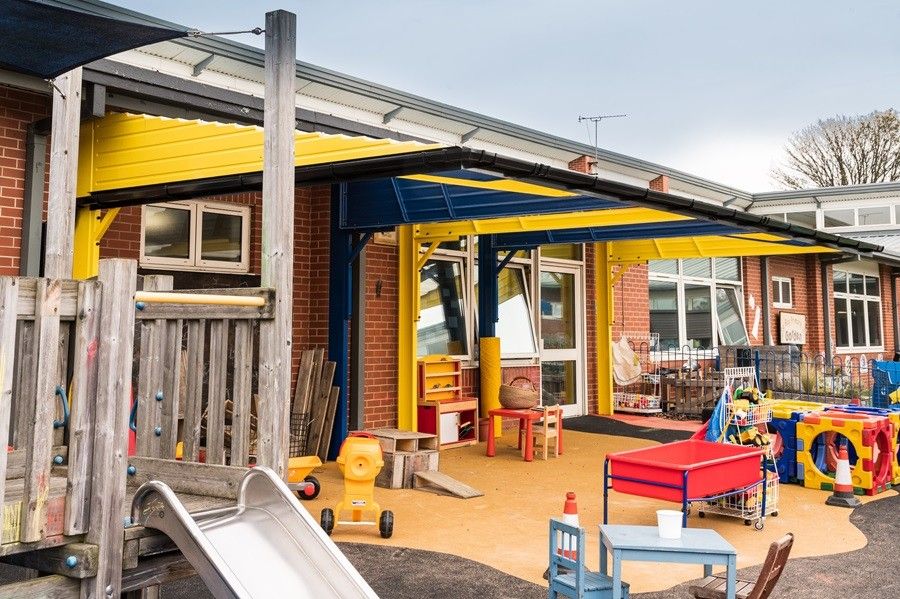
“Our new canopies look fabulous and the installation team were brilliant! They were totally professional and worked to a very high standard. I have no hesitation recommending Canopies UK to colleagues in other schools. The project has truly been a huge success and is being admired by all!”
June Heard, School Bursar, All Saints CE Primary School
Every school site is different, so the best outdoor classroom ideas work with the space you already have. Getting the layout and equipment right makes outdoor lessons run smoothly and encourages regular use.
Making the most of your space
- Small playgrounds: A well-placed outdoor classroom canopy with flexible seating can transform a tight space. Simple touches like chalkboards or clipboards make lessons feel structured without needing lots of kit.
- Courtyards: Central gathering points work well for whole-class teaching, while quieter corners can be used for reading, art or small-group projects. Adding a school playground shelter can make these spaces usable in all weathers.
- Perimeter walkways: Covered walkways are perfect for schools short on space. They can double as teaching space and sheltered walking routes between buildings.
- Larger fields: These can be split into zones for active play, quiet reflection and nature lessons. Positioning a school playground shelter or outdoor classroom canopy along the edge creates a reliable base for teaching, with open space around it for different activities.
Equipment that works
Keep it simple and robust. Benches and picnic tables support group work without creating storage headaches, while moveable seating means you can adapt your outdoor learning activities for different lessons. Adding outdoor whiteboards or display boards helps lessons feel more structured, and planters bring greenery that can double as science or gardening projects.
Choose materials that can handle daily use and British weather, like powder-coated steel and surfaces that drain cleanly rather than collecting puddles.
Power and lighting considerations
A basic power supply makes outdoor spaces much more versatile. Lighting supports year-round outdoor learning, while power points mean you can introduce laptops or projectors for structured lessons.
Keeping your canopy clean is simple – our guide on how to clean your school canopy covers quick maintenance routines that help it last longer.
Outdoor learning and activities
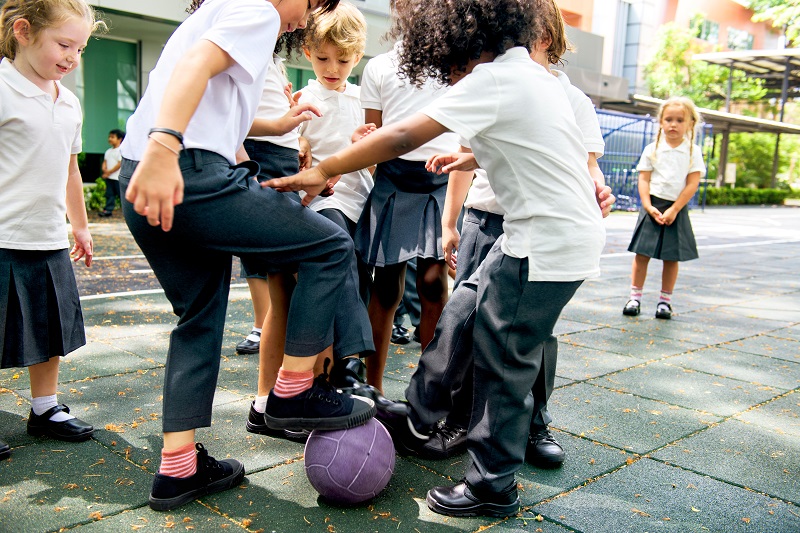
We’ve gathered the best resources to help you plan engaging outdoor lessons throughout the year. Each guide focuses on different seasons and age groups with practical activities you can start using straight away.
Spring and summer outdoor learning guide: Activities for nature study, art, physical fitness and even financial literacy. Filled with ideas for taking full lessons outdoors.
Autumn lesson ideas: Five seasonal activities using natural materials like pine cones and fallen leaves, plus creative writing and wildlife projects.
Winter outdoor play for early years: 15 cold-weather activities from bird cafés and snow play to frozen art experiments. Perfect for EYFS settings looking to stay active outdoors all winter.
The best ideas for outdoor learning: A round-up of the best external resources and websites for outdoor lesson planning, from Woodland Trust to Early Years Resources.
Putting outdoor learning into practice
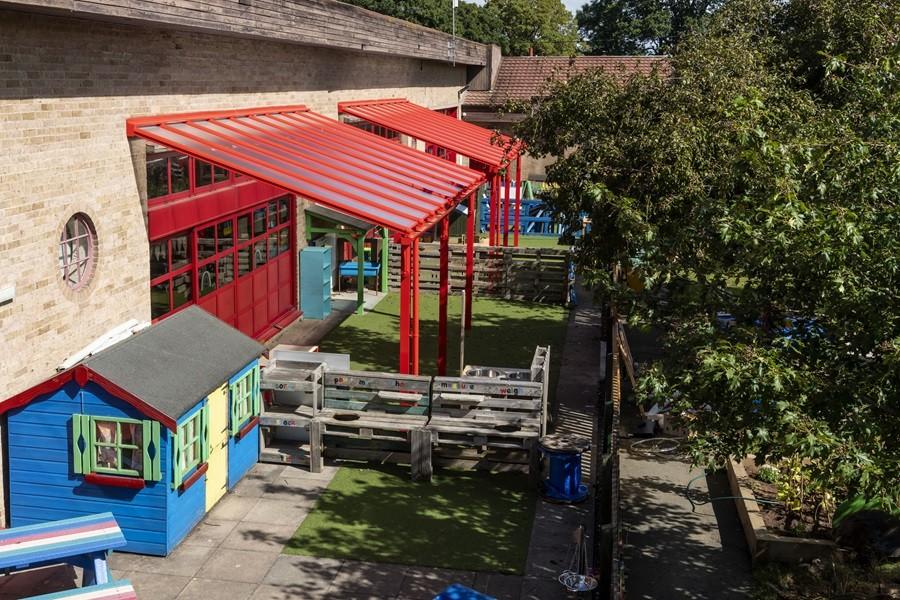
Making outdoor learning a regular part of school life doesn’t happen overnight. The schools that get it right take small, practical steps and build up gradually.
Here’s the roadmap that works:
- Audit your space: Walk your school grounds with fresh eyes. Notice where pupils naturally gather, which areas get muddy and the corners that could become outdoor learning zones. Photos and measurements are useful later when planning with suppliers.
- Define goals and budget: Be clear on what you want to achieve – calmer lunchtimes, more curriculum time outdoors or extra play space. Clear goals help you pick the right shelter and budget realistically.
- Choose your shelter: Match your canopy to your goals and site. Enclosed outdoor classroom canopies support teaching year-round while playground shelters create flexible all-weather play space.
- Plan installation: School holidays are often the simplest time for canopy projects, but we’re experienced in managing term-time installations safely.
- Train staff: Start before installation. Get enthusiastic staff trialling outdoor lessons, set simple weather policies, and make outdoor sessions a regular timetable slot rather than an add-on.
- Measure impact: Track the metrics that matter to your school – whether that’s calmer lunchtimes, improved attendance or more curriculum hours outdoors. Photos, pupil feedback and staff surveys all help build a clear picture of progress.
Funding and procurement
The biggest question for many schools isn’t what they’d do with an outdoor classroom canopy, but how they’d pay for it.
Every school funds projects differently – some use grants or PTA fundraising, others rely on academy support or their annual budgets. The important thing is that cost doesn’t have to hold things up. Finance leasing gives schools the freedom to start sooner and pay gradually, keeping projects moving even when budgets are tight.
Since 2024, the process has become much easier. Schools and academies no longer need Secretary of State approval, removing delays and paperwork so installations can go ahead without waiting for new funding to become available. Payments are made in manageable instalments, giving schools access to new outdoor learning and play spaces straight away.
Want to know exactly how school canopy finance works in practice? We spoke to our Finance Director, Jonathan Eastwood, about the changes schools have seen one year on.
See what’s possible with school canopy finance
Outdoor learning and play in action
“Everyone is delighted with the new canopy and it’s lovely to see it being made use of every day! It went down very well at our New Parents meeting and tour, so thank you for pulling out all the stops to get it installed in time for that.”
Baschurch Primary School
Seeing how other schools have transformed their outdoor spaces often helps bring the benefits to life. Here are just a few examples from our school canopy installations:
Baschurch Primary School
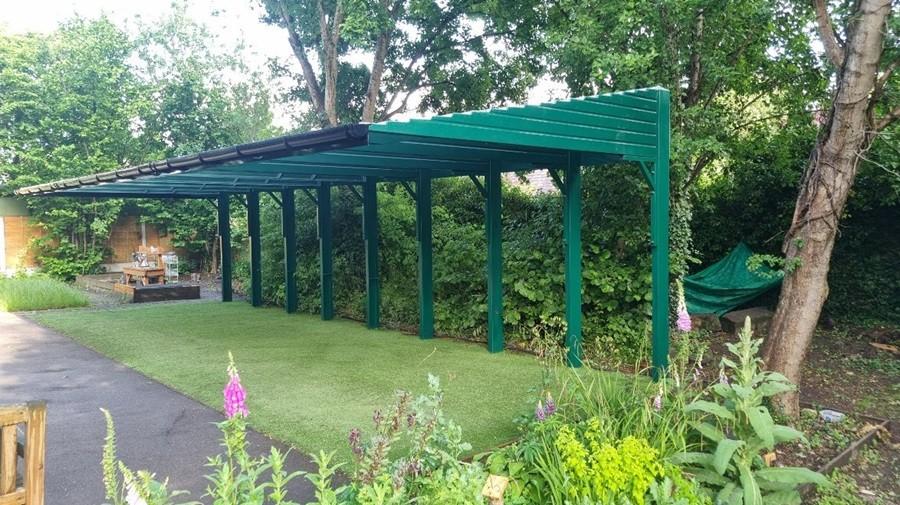
Baschurch Primary’s school garden is a space where pupils connect with nature. But with no cover in place, it couldn’t be used in poor weather, which meant missed opportunities.
To change that, we installed a Connekt cantilever canopy that blends seamlessly into the garden space, creating a sheltered space where learning and discovery can continue in any weather. The space has become part of daily school life, helping staff make the most of their forest school area year-round.
Gresham’s Nursery and Pre-Prep School

Gresham’s Nursery and Pre-Prep wanted to give pupils the freedom to play and learn outdoors in every season. We installed a glass roof Veranda canopy that blends modern practicality and traditional character.
The finished result fits in with the 16th-century buildings, with colour-matched framework and ornate detailing that complements the school’s heritage. The new covered play area means pupils have a bright, weatherproof space to enjoy throughout the school year.
Grand Avenue Primary School
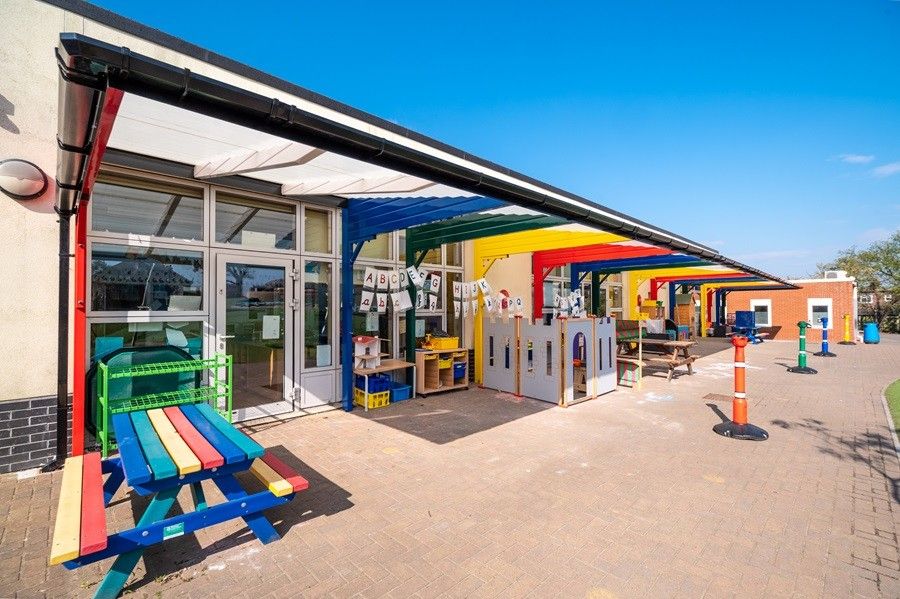
Grand Avenue Primary wanted a bright and energetic play area that children could use all year round.
We designed a Connekt canopy in bold, primary shades of blue, red, yellow and green. The cantilever design meant no front posts, keeping the play area completely open and unobstructed. The result is a vibrant, weatherproof zone that encourages outdoor play and adds a burst of colour to the school grounds.
Take a look at more school canopy projects on our school case study page
FAQs
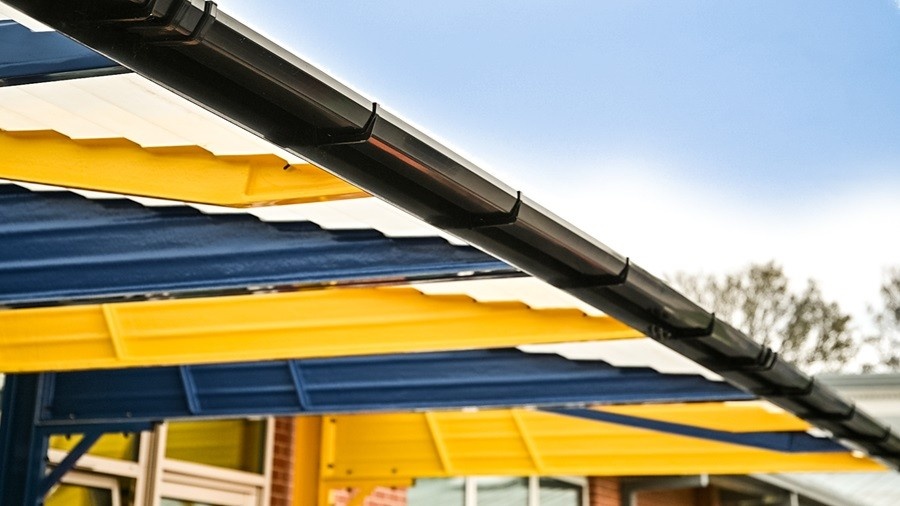
Can we use outdoor learning in winter?
Yes. With the right policies and guidelines, you can use a school canopy in every season.
Do canopies require planning permission?
Many school canopies are classed as permitted development, so no planning permission is needed. Larger projects or listed sites may require approval – we can confirm this during your site survey.
How long does installation take during term time?
Most canopy installations are completed in 2–3 days, though larger projects can take longer. We plan our work around school timetables to minimise disruption.
What’s maintenance like for the canopies?
Our canopies for schools are built to last with minimal upkeep. Occasional cleaning and simple annual checks are usually all that’s needed.
if you’re ready to explore what’s possible for your site, the next step is simple. Book a free site survey to see how a school canopy could work for your space, or request a brochure to explore designs and case studies in more detail.
With over 30 years’ experience and thousands of installations, we’ll help you plan with confidence and give your pupils the space they need to thrive all year round.


